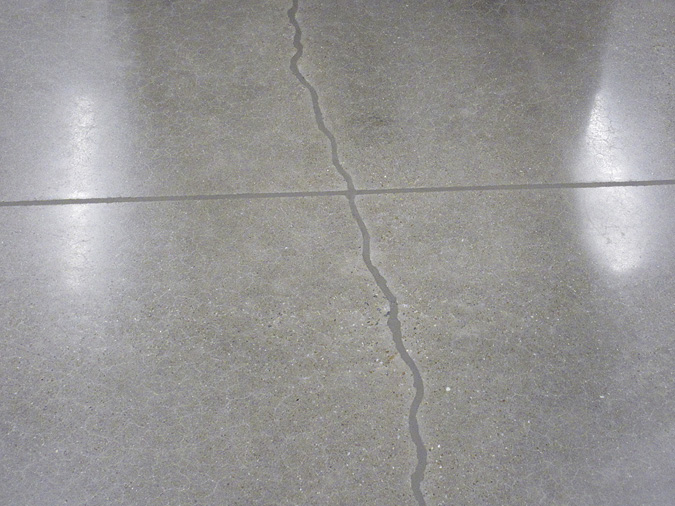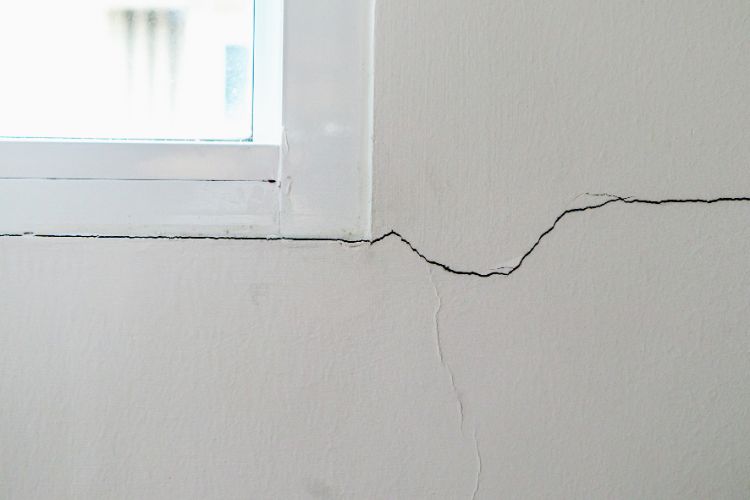By Will Decker, CRI, CMI
One of the biggest concerns for home buyers, and many homeowners, is when they find cracks in their house’s foundation. I will admit that if you have a crack, or cracks, in your house’s foundation you have a problem, but the problem is very often not a big one. Foundation cracks , usually, only mean that you may get a little water seepage into the basement during a heavy rain, but they can also be a symptom of severe and dangerous structural problems.
Crack or crack cocaine is a form of cocaine. It has not been neutralized by an acid to make cocaine hydrochloride, the pure form of the chemical. Crack comes in a rock crystal form that can be heated and inhaled or smoked. It is called 'crack' in reference to the cracking sound it makes when it is heated. The symptom of joint cracking is described differently by different people while nevertheless representing the same condition. Various descriptions for the same process include 'popping,' 'exploding,' 'noise,' 'snapping,' and 'creaking' of a joint. The cause of joint cracking depends on a number of conditions. Cracks in a toilet bowl can be difficult to identify, so it is a good idea to check for cracks on a regular basis. A toilet bowl crack above the water level will need to be monitored. If you find a crack in the bowl that does not leak at all because it's near an area that does not have water going through it, you might be able to leave it alone.
How do you tell the difference?
What follows is some guidelines and examples of the many types of foundation cracks that inspectors see and how we interpret them and explain them to our clients. Our hope is that this article will help you in keeping your house safe and ally some unnecessary fears.
Please keep in mind that while many home inspectors, especially advanced professionals who have had special training, like a Certified Master Inspector (CMI) are a very good source to evaluate foundation cracks, when we encounter “iffy” situations, an evaluation by a licensed structural engineer may be required, especially if a detailed repair plan is needed.
Types of Foundations:
Before we begin explaining foundation cracks, lets first understand the different types foundations houses can have. I live and work in the Chicagoland area where the foundations are usually poured concrete and most houses have basements. In the southern United States, most houses have crawlspaces instead of basements. In Florida, where my Daughter lives, most foundations are just slabs of concrete poured on the ground (the water table is too high in Florida and basements would just fill up with water). Different areas have different soil conditions and climates, calling for different types of construction. All foundations, however, serve to provide the structural base for the building. As you can see from the diagram, all types of foundation begin with a wide base, called a footing, upon which the foundation wall rests. The footing provides a wide area resting on the ground to distribute the weight of the building evenly. The footing is usually placed deep in the ground (in this area, footings should be at least 4 feet deep) so they will not be moved by water or freezing ground in the winter. The foundation wall, what most people think of as the house’s foundation, rests on the footing and extends upwards to where it meets the house’s exterior walls.

The foundation wall can be constructed of different types of materials, again depending upon local conditions and construction requirements. Some areas use concrete blocks, also referred to by their old name of cinder block. Some older houses in my area have brick foundations. There are even some areas, usually dry, desert states, where the foundations are constructed out of wood. In my area, most foundations are poured concrete with a few that are concrete block or brick and I will limit this article to those types.
Types of Foundation Cracks and How to Fix:
Foundation cracks have many causes, but the cause of the crack can usually be determined by the type of crack, as can the solution to the crack problem.
Vertical crack: A vertical foundation crack is a crack that goes straight up and down or slightly diagonal, within 30 degrees of vertical. Vertical cracks are of least concern and are commonly seen almost all houses. In fact, it is a very rare in this area to have a concrete foundation that does not have one or two vertical cracks. They occur because concrete is very strong under compression but cracks easily under tension. Most houses will see one, two or even three vertical cracks form within the first couple of years after construction. These cracks are not a real structural concern, but they can allow seepage of water through the foundation wall during heavy rains. Again, this is normal and commonly seen. The solution to vertical cracks is usually simple, inexpensive and permanent.
The Normal Thing Cracked
We recommend that you have a vertical crack repaired by urethane or epoxy
injection (left). A material is injected into the crack, through small holes drilled into the crack face from inside the basement. A sealing material is injected under pressure and the crack is well sealed. The material is also flexible so that the crack will not re-open if there is future foundation movement. Almost most of these type of repairs are warranted for 50 years . Fixed once and fixed forever.
Differential settlement
Diagonal Cracks: A diagonal foundation crack is one that runs from about 30 to 75 degrees from vertical on the wall. Many times, diagonal cracks with be wider at one end than at the other and sometimes the crack will be very narrow (also called a hairline crack). Diagonal cracks are usually caused by differential settling of the foundation and can occur when the house is new or old. Differential settling is cause by a change in the ground conditions under the foundation footings. One part of the house’s foundation, say one corner, settles a little lower into the ground while the rest of the foundation stays fully supported. This causes a tension on the foundation just like described above. But this tension is not in a straight horizontal vector, but horizontal and vertical. The foundation cracks, but cracks at an angle rather than straight up-and-down. This is also why many diagonal cracks have the crack wider at one end. Because the foundation is moving in two directions, part of the crack is also wider and will indicate the exact settling area. This differential settling could be cause by the house being built on a hill (left) or because of changes in the soil conditions because of excessive rain or drought. It cal also be caused by simple things like having your gutter downspouts drain too close to the house’s foundation on one side or at one corner.
Diagonal cracks can be repaired in the same manner as vertical cracks, but more injection material is usually called for to account for any additional future movement. Repairing diagonal cracks also calls for determining the cause and position of the differential settling. This is where a certified Home Inspector, one who has specialized training in structural and foundation issues, can be of help.
Horizontal Cracks: Foundation cracks that run sideways are the most serious type of cracks. They are sometimes seen in poured concrete foundations but more commonly in concrete block and brick foundations. Horizontal cracks are caused by a bowing foundation. The foundation wall’s exterior is usually covered by the back filling of dirt and gravel. If this back fill is improperly done, does not get proper drainage or gets overly compressed (many times by the construction equipment that was used to build the house) the excessive pressure against the foundation wall cases it to bow inwards. Sometimes there is excessive rain which can also be followed by a freeze. This can increase the hydrostatic pressure behind the foundation wall and cause it to bow inwards. Bowing foundations are serious and can lead to structural failure of the foundation and collapse of the house.
There are a couple of different techniques for fixing horizontal foundation cracks. Some involve the installation of high-strength strapping on the interior of the foundation to keep the wall from bowing further. Sometimes a number of reinforcing posts or braces are installed in the basement of crawlspace. There are also techniques that use anchors buried in the surrounding soil that pull the foundation wall back out and secure it.
Regardless of the solution, the a bowing foundation should always be evaluated by a licensed Structural Engineer and the repair technique and plan be determined by him/her. Bowing foundations are serious and their repair should always be done by a professional.

Foundation step crack
The Normal Thing Crack Cocaine
Step Cracks: Some times the cracks are not on the foundation, but are seen on the exterior wall above the foundation. This is commonly seen in brick or concrete block exterior houses. Step cracks should be treated just like diagonal cracks and are the result of differential settling of the house. If the cracks are only in the mortar joints between the brick or block, the problem is usually not serious and can be repaired by re-pointing of the mortar. However, if the brick or block is displaced (moved in or out from the material on the other side of the crack) or the cracking extends through the blocks, the problem may be more serious. Step cracks should always be evaluated by a Certified Home Inspector or a Structural Engineer to determine their severity.
